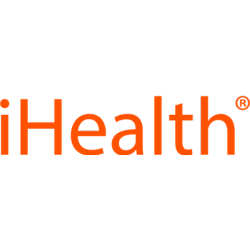Giving your Snack Routine a Facelift
We know all about the portioned plate, even if not by that name. We have been told to fill half our plate with non-starchy vegetables and eat one quarter of the plate from whole grains and another quarter plate from lean proteins.
If you've got the meal routine down perfectly, chances are that now you're wondering how to make your snacks more interesting.
For people with Diabetes, I often recommend eating the whole grains with the meals, and saving fruit and milk for a snack since they, too, have carbohydrates. But for fruits, milk and yogurt, there are some times where they aren't recommended.
Fruit and dairy both contain simple sugars. Fructose in fruit, and lactose in milk are sugars that, because they are small molecules and easily absorbed into the bloodstream, they'll spike your glucose faster, and subsequently drop quicker. For this reason, fruit, milk and yogurt are better consumed when you're going to be more active between meals. Typically the more active times are mid-morning and mid-afternoon, and perfect times for these types of snacks.

If you're hungry in the evening after dinner, or you need a snack to take your medications, avoid milk, yogurt and fruit unless you plan to do a little exercise before bed. Eat instead carbohydrate that will be absorbed slowly, like a high fiber, low sugar whole grain. To absorb the carbohydrates in a meal or snack more slowly still, try adding some healthy protein or fat to that carbohydrate.
If you aren't exercising, keep the carbohydrates at snack times to small portions, 1 carbohydrate exchange, or around 15 grams total carbohydrate is all you need.
-
Some examples of Mid-morning or mid-afternoon snacks (1 fruit, 1 milk or yogurt)
- 1/2 cup fat free unflavored greek yogurt, with 1/2 cup berries or papaya
- 3 dates or 1/2 cup fruit with peanut butter,
- 3 dates or 1/2 cup fruit with 1 piece low fat string cheese
- 1/2 cup fruit with 1/2 cup low fat or fat free cottage cheese
- Smoothie with 1 cup vegetables (like spinach) , 1/3-1/2 cup fruit, 2 tbsp nuts or seeds, and water or ice cubes

-
Some examples of bedtime snacks (1 whole grain carbohydrate, +1 low fat or medium fat protein)
- 1/2 cup edamame (steamed soybeans)
- 1/2 cup roasted garbanzo, or fava beans (chickpeas, or broad beans)
- 4-6 wheat crackers, or 1 rice cake with peanut butter
- 1/2 cup hummus with celery or carrot sticks
- 1/2 cup (4-5) grilled sweet potato slices with olive oil, cinnamon, and stevia extract (2 drops per sliced sweet potato, optional)

If you'd like more ideas, contact us on the Unified Care app and we would be happy to help!
September 2, 2020 | Categories: Blood Pressure, Diabetes, Healthy Sweets and Snacks, Hyperlipidemia, Hypertension, Nutrition, Nutrition & Diabetes, Nutrition & Hyperlipidemia, Nutrition & Hypertension, Nutrition & Weight, Recipes, Snacks, Weight Management, Wellness | Comments Off
This feature is coming soon
-
July 09, 2024
-
May 08, 2024
-
March 04, 2024
This feature is coming soon
You May Also Like
Title placeholder
posted_date placeholder
Title placeholder
posted_date placeholder
Title placeholder
posted_date placeholder
Title placeholder
posted_date placeholder
Title placeholder
posted_date placeholder
Title placeholder
posted_date placeholder
Title placeholder
posted_date placeholder
Title placeholder
posted_date placeholder
Title placeholder
posted_date placeholder
Title placeholder
posted_date placeholder
Title placeholder
posted_date placeholder
Title placeholder
posted_date placeholder
Title placeholder
posted_date placeholder
Title placeholder
posted_date placeholder
Title placeholder
posted_date placeholder



